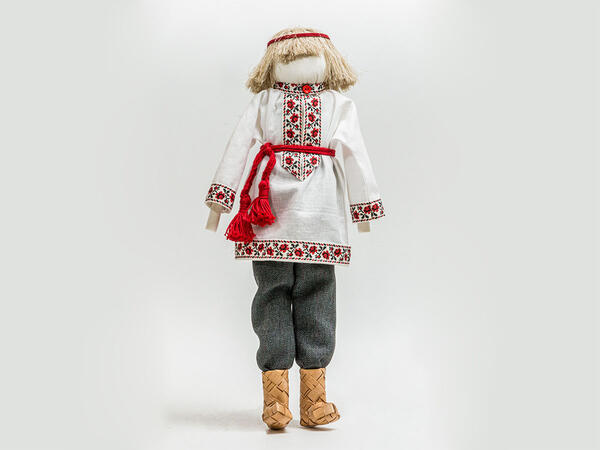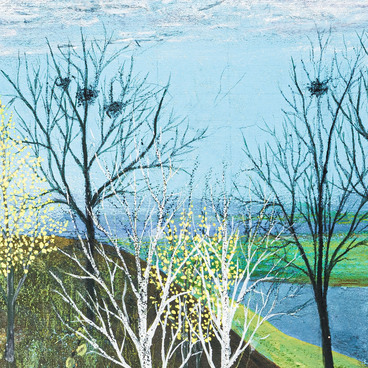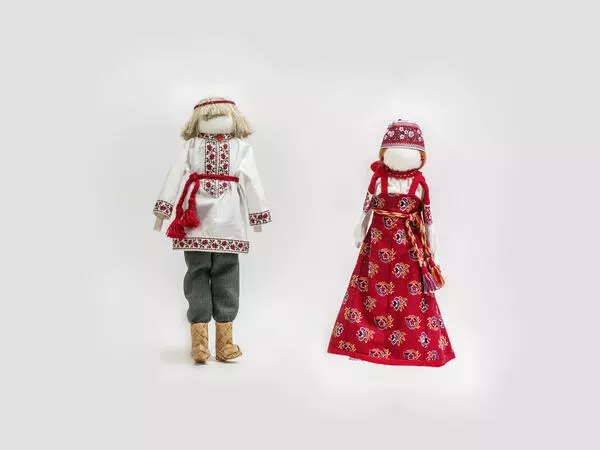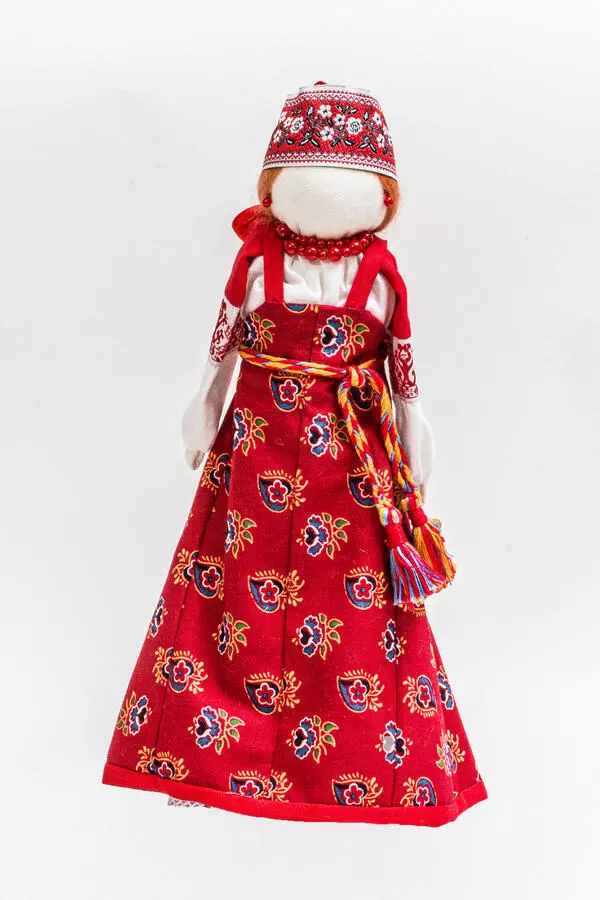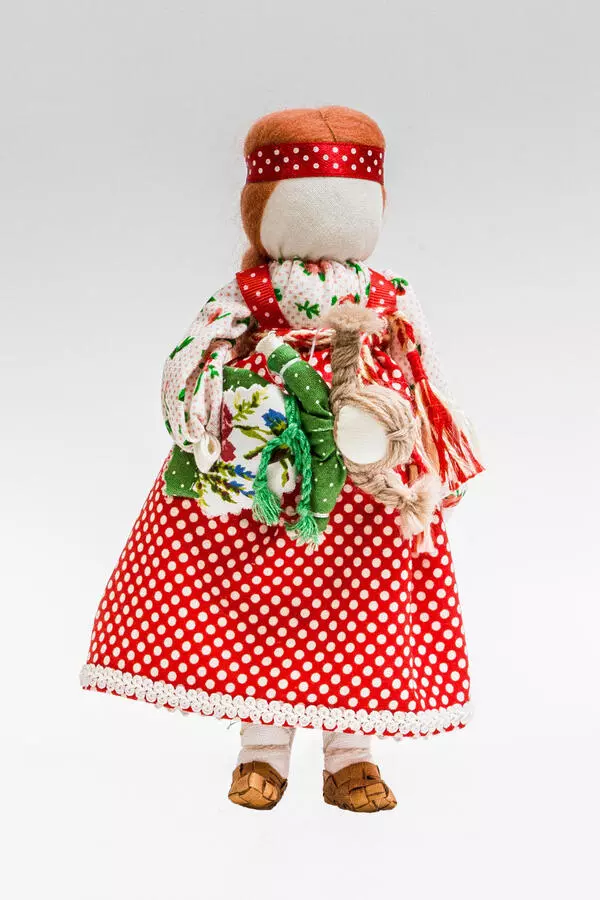The rag doll ‘Lad’ was sewn by a craftswoman Vera Krasko especially for the large author’s project “Any Time is a Blessing”. The figure has a pairing doll “Maiden” — a young bride in a bright red floral sarafan dress. Together they make a composition “Youth”.
In this project, Vera Anatolievna creates dolls in traditional folk costumes. She gives a new meaning to the theme of childhood, youth, growing up, and gradual aging. In one of the interviews, the craftswoman said, “Most of all I love the family theme, motherhood. My favorite composition is “Any Time is a Blessing”.
The craftswoman made the base of the doll from a wire frame. The head, torso, and legs were sewn from cotton fabric and stuffed with padding polyester. The hairstyle was formed from cotton waste. It is a coarse fiber of short staple that remains from the primary cultivation of hemp, fiber flax, or Calcutta hemp. Vera Krasko sewed the doll’s clothes from natural fabrics.
The craftswoman manually sewed part of the ‘Lad’ doll, but some of the seams were made with the help of a sewing machine. Thanks to this combination, the doll got a clear silhouette and the impression of handmade work was still preserved.
The doll is dressed in a Russian national costume, blue woolen trousers, birch bark bast shoes, and a pristine white linen shirt with traditional scarlet flowers embroidery. The craftswoman imitated it with a thin ribbon.
In Russian, the word for the pristine white color originated from the word ‘kipen’ — the foam that is formed when water boils or when the waves move rapidly.
The costume is decorated with bright shades of red, which symbolize youth, beauty, and fertility. The combination of colors indicates that this is the future father of the family. After the first kids are born in the family, neither the husband nor the wife could wear such colors anymore. The shades became duller and duller with time, and elderly people wore shirts, trousers and skirts that were sewn mainly from brown, blue, and black fabrics.
The doll maker Vera Krasko was born in 1958 in the village of Nikolaevka in the Tuymazinsky district of Bashkortostan. She graduated from the Ufa State Petroleum Technological University and worked as a leading engineer for many years.
Vera Anatolievna started sewing in 2013, when she first visited the classes of the ‘Gamayun’ Museum Center. Later, the craftswoman independently mastered the technique of making a rag doll, and in 2016, a personal exhibition of her works was held in the museum.
In this project, Vera Anatolievna creates dolls in traditional folk costumes. She gives a new meaning to the theme of childhood, youth, growing up, and gradual aging. In one of the interviews, the craftswoman said, “Most of all I love the family theme, motherhood. My favorite composition is “Any Time is a Blessing”.
The craftswoman made the base of the doll from a wire frame. The head, torso, and legs were sewn from cotton fabric and stuffed with padding polyester. The hairstyle was formed from cotton waste. It is a coarse fiber of short staple that remains from the primary cultivation of hemp, fiber flax, or Calcutta hemp. Vera Krasko sewed the doll’s clothes from natural fabrics.
The craftswoman manually sewed part of the ‘Lad’ doll, but some of the seams were made with the help of a sewing machine. Thanks to this combination, the doll got a clear silhouette and the impression of handmade work was still preserved.
The doll is dressed in a Russian national costume, blue woolen trousers, birch bark bast shoes, and a pristine white linen shirt with traditional scarlet flowers embroidery. The craftswoman imitated it with a thin ribbon.
In Russian, the word for the pristine white color originated from the word ‘kipen’ — the foam that is formed when water boils or when the waves move rapidly.
The costume is decorated with bright shades of red, which symbolize youth, beauty, and fertility. The combination of colors indicates that this is the future father of the family. After the first kids are born in the family, neither the husband nor the wife could wear such colors anymore. The shades became duller and duller with time, and elderly people wore shirts, trousers and skirts that were sewn mainly from brown, blue, and black fabrics.
The doll maker Vera Krasko was born in 1958 in the village of Nikolaevka in the Tuymazinsky district of Bashkortostan. She graduated from the Ufa State Petroleum Technological University and worked as a leading engineer for many years.
Vera Anatolievna started sewing in 2013, when she first visited the classes of the ‘Gamayun’ Museum Center. Later, the craftswoman independently mastered the technique of making a rag doll, and in 2016, a personal exhibition of her works was held in the museum.

